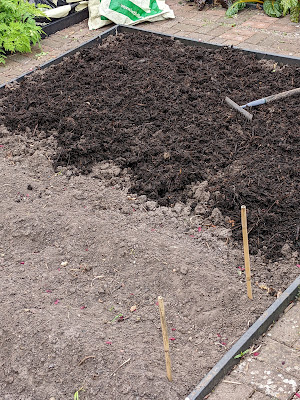For more than half the year (Autumn, Winter and early Spring), we allow garden slugs (e.g. Limax Maximus or Leopard Slug) pretty free range to enjoy the garden and its produce. They are particularly good at hoovering up plant debris and decaying matter; although any especially voracious slugs, with a liking for plants we are fond of, are despatched to one of the hot composting bins to become next year's garden compost!
Unfortunately for the slug, we do not find their eating habits conducive to Spring/Summer sowings of our vegetables and flowers. So as April comes around, it is time to do BATTLE.
I have discussed various means of slug control in a previous post and we still use a variety of methods. However, the first line of attack is always Nemaslug, the biological slug slayer. One of the reasons I like Nemaslug, apart from the fact it works, is that it functions via a short-term increase in natural slug predators and is entirely reversible.
It is a time-consuming manual operation although there are ways to do it quicker if you have large areas to treat. To treat 100 ㎡ (i.e. an area measuring 10 m x 10 m or 5 m x 20 m), I usually set aside between half and a full day depending on how much preparation is needed (e.g. whether I need to clear the ground first). You can save time and effort by applying the nematodes to the soil immediately after rain or, even, while it is raining. The nematodes are easiest to apply to bare soil and, of course, the soil temperature needs to be above 5 ℃ which is why April is typically when the first application is made. I find two applications are sufficient with the second application approximately 6 weeks after the first.
I operate a 4-bed rotation system in the kitchen garden. The onion/garlic/leek bed is already active with the garlic planted out on 1st January (softneck) and 9th March (hardneck) and the onion sets planted out on the 19th March.
 |
| Onion/Garlic/Leek Bed (25/4/22) |
Seed potatoes were planted out on the 11th April with space left for sweet corn in May/June depending on the weather.
 |
| Potato/Sweetcorn Bed (21/4/22) |
That left the last year's potato/sweetcorn bed (already cleared) and the brassica bed (below) which I needed to clear first before starting the nematode treatment.
 |
| Brassica bed (21/4/22) |
 |
| Black plastic as weed & cat control |








0 comments:
Post a Comment